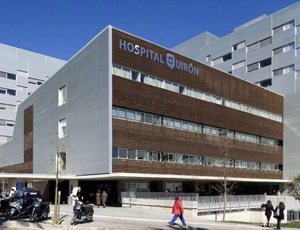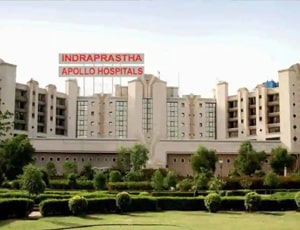This procedure, known as Transurethral Resection of Bladder Tumor (TURBT), is designed to detect and remove bladder tumors in their early stages by inserting a scope through the urethra leading to the bladder. During the TURBT procedure, urologists can identify bladder cancer and potentially address various other bladder-related disorders. It's noteworthy that around 75% of detected bladder cancers are superficial, meaning they only grow on the surface of the bladder walls without penetrating deeply. This characteristic allows surgeons to remove the tumor at the bladder wall level without causing damage to the deeper layers of the organ. The information gathered during the procedure assists surgeons in determining the type and extent of the tumor's abnormality. This information is crucial as it helps urologist surgeons decide whether further treatments are necessary.
The bladder, a sac-like muscular organ, resides in the pelvic region above the pelvic bone. It connects to the kidneys via two ureters, which transport urine from the kidneys to the bladder for storage. Abnormal cell growth in the inner lining can lead to the development of a tumor, necessitating diagnosis followed by TURBT surgery.
In the initial stages, tumors are often difficult to detect. Patients may exhibit few notable symptoms when harboring a primary tumor.
Progressing through stages of bladder cancer, Stage 0, also known as carcinoma in situ, represents non-invasive papillary cancer. At Stage I, cancer affects the bladder's lining but has not invaded the muscular wall. Stage II marks invasion into the bladder's muscles, rendering it invasive. Stage III denotes further spread into nearby tissues like reproductive organs. Finally, Stage IV indicates lymph node involvement and spread to surrounding organs.
The causes of tumors in the bladder are not clear and well defined but it has been linked to smoking, chemical exposure to radiation, or a parasitic infection. The abnormal cells undergo some mutation that allows them to multiply in a nonorderly fashion and goes beyond control and they do not die thus giving rise to the tumor.
A person suffering from a tumor will experience mild sensations of burning and discomfort in the times of urination for quite a few days. The force of the urinary stream may also undergo significant changes which can be observed for a week to a fortnight. Usually, there could be none of the symptoms and in certain cases, all symptoms even if experienced may not lead to the conclusion that it is a bladder cancer. There can be blood or clots of blood in the urine along with a tendency to urinate too frequently. The tendency of urinating at night may be felt more but there can be general problems in urine passing. Associated along with this the patient can experience pain on either side of the body.
Some of the other treatment alternatives for TURBT are being worked upon while some of them have tremendous side effects
Blue light fluorescent cystoscopy : Enhanced tumour visualization is possible and detection of tumour chances are increased by almost 20 to 25% with this method where an ultraviolet blue light is used. A dye is injected an hour prior to the procedure.
Adjuvant bladder cancer therapy: TURBT is not suitable for many who have a high chance of suffering a recurrence within 12 months from the treatment. In this case adjuvant therapy is recommended. It includes intravesicle chemotherapy. Chemotherapy for bladder cancer includes giving medication to curb the abnormal growth of cells. But it also has its sets of side effects like experiencing irritation in the bladder and loss of hair, nails and feeling debilitated for a very long period of time.
If you are about to prepare for the surgery then you shall be asked to quit smoking long before. Depending on the type of tumour in the bladder and ureteroscopy results the plan of surgery shall be discussed with the kind of anaesthesia that may be employed by your surgeon. Right before the procedure there will be a check made on the general fitness of the body and some antibiotics can be prescribed to prevent any kind of infections from the surgery. Compression stocking will be put on and an injection may be administered like heparin to prevent clotting in the veins of the legs.
A catheter will be given to the patient while going home and nurses will instruct how to maintain it clean and use it as a drainage bag. How to remove the catheter will also be taught which is a very simple and easy step and has very little discomfort associated with it. Antibiotics can be used in the form of ointment around the tip of the catheter to reduce irritation. Usage of an overnight bag is very convenient since it can store the urine for a longer period of time. It happens that there may be some blood clots that may pass while urinating; this must not scare you as it is normal. In addition to the overnight bag while walking a leg bag can also be worn. But if you find persistent clotting and large clots or the catheter is found not draining urine anymore you should inform your surgeon.
The total period of recovery is pretty long as 6 weeks and can be divided into two weeks and then the last 4 weeks. During the first 2 weeks the patient is expected to behave as leisurely as possible and do very light activities and sexual activity must be avoided during this period. Of course, within the first week, one should go and collect the biopsy report and adhere to the medications prescribed by the doctor. In the next 4 weeks, the patient can slowly resume back normal activities with periodic checkups with the doctor to understand the health and chances of recurrence.

Barcelona, Spain
Quironsalud Barcelona Hospital is built at a very convenient location in Barcelona. The hospital is ...more
![]() Accommodation
Accommodation
![]() Airport Transfer
Airport Transfer
![]() Choice of Meals
Choice of Meals
![]() Interpreter
Interpreter

Delhi, India
Equipped with more than 50 specialty institutes, Indraprastha Apollo was started with the vision of ...more
![]() Private Rooms
Private Rooms
![]() Translator
Translator
![]() Nursery / Nanny Services
Nursery / Nanny Services
![]() Airport Pick up
Airport Pick up

Marrakesh, Morocco
History Clinique Internationale Marrakech is opened to provide world-class medical services to the ...more
![]() Accommodation
Accommodation
![]() Airport Transfer
Airport Transfer
![]() Choice of Meals
Choice of Meals
![]() SIM
SIM

Kidney Transplant Surgeon
Delhi, India
of experience
USD 40 for video consultation

Urosurgeon
Delhi, India
18 Years of experience
USD 32 for video consultation

Urosurgeon
Delhi, India
32 Years of experience
USD 32 for video consultation

Urosurgeon
Wales, United Kingdom
30 Years of experience
USD 200 for video consultation